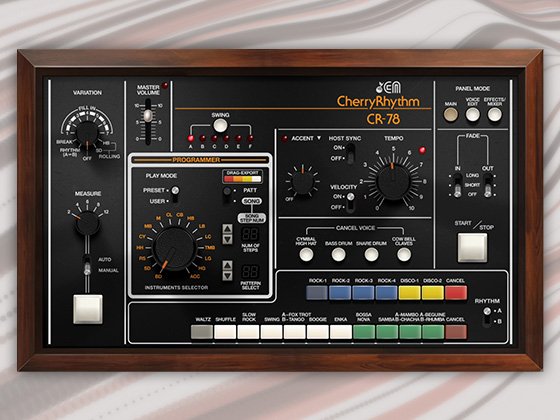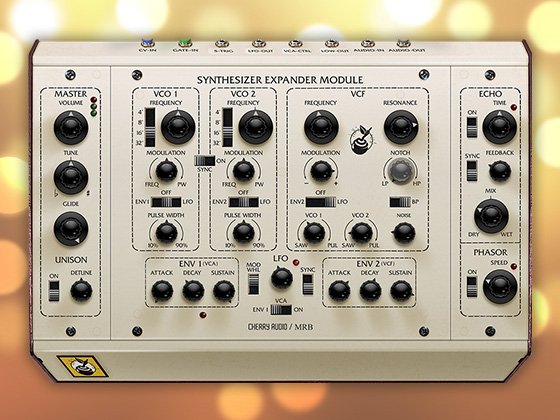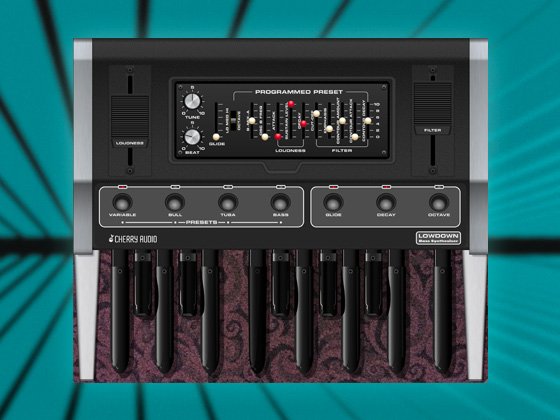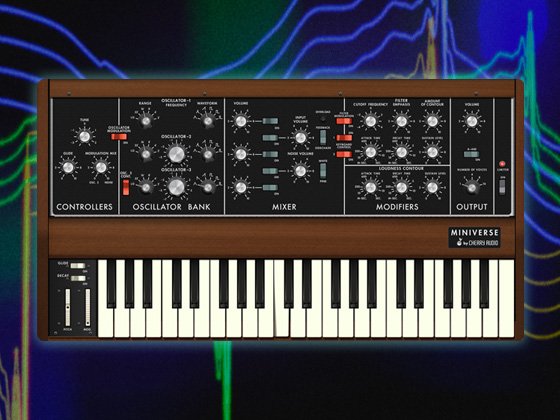Manufacturer: Weevil X R_Ware
$10.00
WEEVIL X R_WARE
IT IS ALL NOISE
Seed Oscillator grows TEXT INPUT into an OSCILLATOR! ORGANIC!
Did you ever wanted to hear what Shakespeare sounds like? The literal texts of course! Spoiler: it sounds like NOISE when translating the digital text data into a literal audio signal. PERFECT for the NOISE BUNDLE! Seed Oscillator turns text input into a waveform through the magic of interpolation. Give your sounds a message.. literally!
The HUUUGE frequency dial invites you to experiment with this module as a modulation source, as a carrier for Linear Through-Zero FM and PM, as a complex LFO and whatever else you can come up with!
FREEEEEEZE the oscillator to turn Seed Oscillator into a text-based waveshaper/wavefolder!
Manual:
SEED Section
The TEXT INPUT allows you to create a SEED for the Random Number Generator in Seed Oscillator's synthesis engine from any combination of printable characters. You can either experiment with different SEEDs by typing in different text strings or simply copy-paste some arbitrary text into this input. Pro-Tip: Have you ever wondered what your favorite quote would sound like as a waveform? Try it out!
MODULATION Section
Pitch CV
Connect any 1V/Oct signal to this input to control the pitch of the oscillator. Base tuning at 0V is given by the huge FREQUENCY knob in the FREQUENCY Section. Pro-Tip: You can also use this input for Exponential Frequency Modulation!
Linear Frequency Modulation ( LINEAR FM )
Besides the Pitch CV/Exponential FM Seed Oscillator also provides Linear FM which offsets the oscillator's frequency linearly. When patching an audio-rate signal into this input, complex, overtone-rich FM timbres can be achieved. The small knob at the top right of the input is an ATTENUVERTER for the input signal to aid you in fine-tuning the optimal modulation amount. Seed Oscillator is capable of Linear Through-Zero FM, which oftentimes produces a more pitch-stable output signal. To enable/disable the Linear-Through-Zero FM mode use the switch to the right of the LINEAR FM input.
Phase Modulation ( PM )
Seed Oscillator lets you modulate the phase of the oscillator to produce complex, pitch-stable signals. Similar to the LINEAR FM input, the PM input also has a dedicated ATTENUVERTER knob on the top right of it to control the modulation amount. The switch to the right of the PM input freezes the oscillator engine. When the oscillator is frozen it will no longer move on its own. You can use the PM input to move the oscillator manually. This turns Seed Oscillator into a capable, HQ Waveshaper/Wavefolder. Pro-Tip: Process one Seed Oscillator (or any other audio signal) through another frozen Seed Oscillator's PM input to create very complex timbres easily! Experiment with different SEEDs. Less complex/long SEEDs tend to produce more musical result when heavily modulated.
RND SEED
If you don't feel like typing or simply need some extra inspiration/quick spice, you can use the RND SEED button to generate a random text for the SEED value. By default, the generated sequence is up to 16 characters long. You can however change the behavior of the random seed generator by clicking on the RND SEED label. This will open up a configuration menu that let's you choose how complex the resulting SEED will become. You can either choose a FIXED SEED LENGTH or a RANDOM SEED LENGTH that has up to X symbols. You can override the default and set your current selection as the new default value by Selecting MAKE CURRENT DEFAULT from this context menu. Pro-Tip: Longer SEED sequences produce more complex and noisier tones, because more values are crammed into one wave-cycle. You can abuse this behavior by choosing a very long SEED sequence and then turning the FREQUENCY very loooow to produce a smooth, quasi-random LFO.
FREQUENCY Section
The FREQUENCY section enables you to experiment with different frequency settings for the oscillator. The huge frequency knob invites for experimentation when using Seed Oscillator as a MODULATOR or CARRIER in FM/PM/AM/RM patches. The default value of the knob is set to C2 (~65.41Hz). You can easily go up and down an octave by using the 2 and /2 buttons. 2 doubles the frequency and thus moves the oscillator one octave up in pitch. Likewise /2 halfes the frequency and moves the oscillator down one octave in pitch. 3 and /3 work the same as the 2 and /2 buttons, but they move the frequency up and down one and a half octave per button press. For quick selection and/or fine-tuning two additional knobs are located left and right of the big frequency knob. The left knob lets you set a continuous multiplier for the frequency value. This works best when setting a value less than 1 to reign in exact modulation tempi when using Seed Oscillator as an LFO. The knob to the right works the same as the one to the left, but is stepped and quantized to increments of 1 to the right and decrements of 1/8 or 0.125 to the left. Use this knob to set exact multipliers from an eighth of the set frequency to eight times the set frequency. Both knobs features display that show the currently set multiplier for each knob. You can also combine these knobs to set a coarse multiplier value with the stepped knob and then further fine-tune the multiplier with the continuous knob. Since this section is all about frequency, a big frequency display on top of the big frequency knob shows you the current frequency of the oscillator as set by this section (this includes all multipliers).
OUTPUT Section
SYNC
Seed Oscillator is capable of being synchronized to any incoming signal, trigger or gate. Use the small THRESHOLD knob above the SYNC input to set the threshold value, which the input signal needs to exceed to trigger a sync event. If you want to sync Seed Oscillator to a trigger or gate signal the THRESHOLD doesn't matter too much as long as the trigger or gate signal's level is above the set threshold. For syncing Seed Oscillator to other oscillators you can experiment with different THRESHOLD levels to sync Seed Oscillator to different points in the incoming waveform that exceed the THRESHOLD value. To sync Seed Oscillator to the wave-cycle of another oscillator with no phase offset, try setting the THRESHOLD all the way down. The switch to the right of the SYNC input switches the sync mode between HARD SYNC and SOFT SYNC. HARD SYNC resets the oscillator's phase back to the start of the waveform. Please note: due to the nature of the Seed Oscillator engine, the start value might not fall on a zero-crossing. SOFT SYNC reverses the oscillator's movement direction. This usually results in a smoother tone than HARD SYNC. Experiment with both sync modes to find the best mode for any application.
DC
Some SEED texts might result in biased waveforms. You can also force a DC bias onto the waveform by dialing in DC with the DC knob. This helps to re-center biased waveforms or conversely bias centered waveforms. Pro-Tip: Used in combination with the GAIN you can drive the waveform with a bias into the output clipper producing more even harmonics (asymmetric distortion).
GAIN
Some random value sequences might result in a very low or very high signal level. To add character and grit to Seed Oscillator an HQ Soft Clipper warms up the signal and prevents overly loud outputs. You can ease off the clipping by lowering the GAIN knob or enrich the timbre by cranking the GAIN knob up high! Rest assured, the signal level that Seed Oscillator produces does not exceed the +/-5V range.
DC BLOCK
Some SEED texts might result in biased waveforms that tend to be offset in either direction. If you use Seed Oscillator as a modulation source it is oftentimes desirable to get rid of the DC. Therefore, Seed Oscillator comes equipped with a nifty DC Blocker that equalizes the average values of the positive and negative parts of the output waveform. Turn the DC Blocker off when using Seed Oscillator at very low frequencies to prevent the DC Blocker from messing up the output. Pro-Tip: ignore the last sentence, could be interesting as well.
OUT
The OUTPUT of Seed Oscillator that delivers a low-aliasing, HQ signal within the range of +/-5V.



















































































